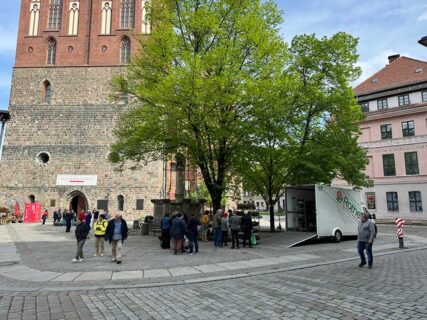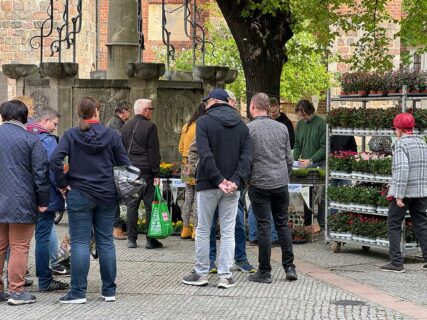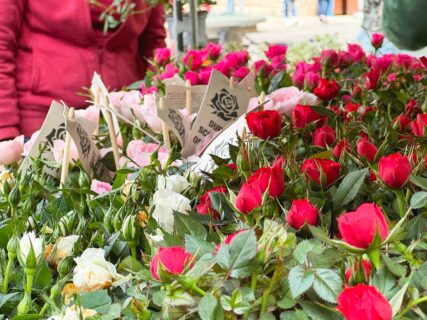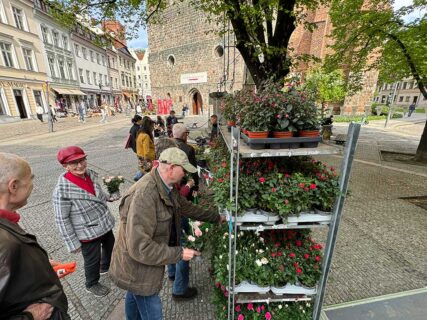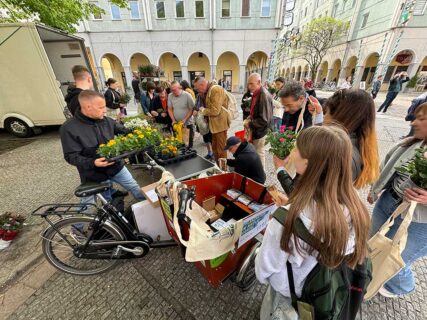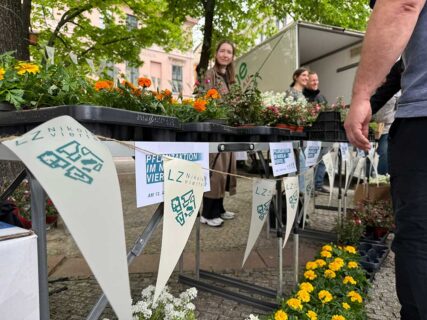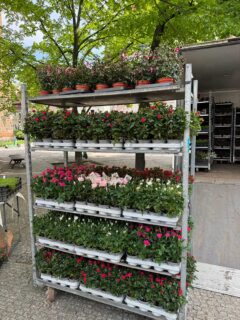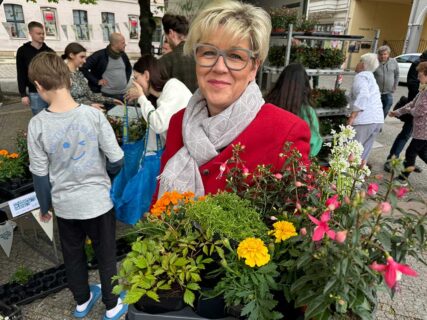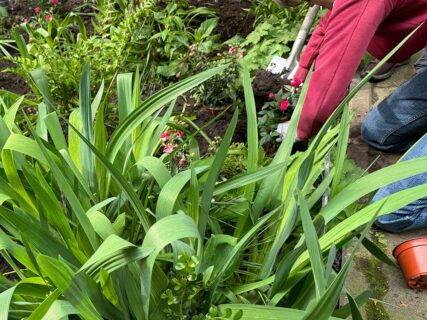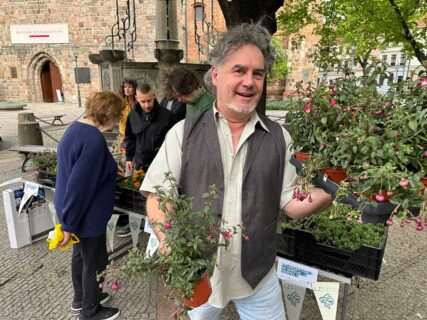More color for the Nikolai Quarter
On April 12, people dug, planted and watered in Berlin’s place of origin. A great opportunity for business people and residents to meet, talk to each other and do something together – with a truckload of fresh plants financed and handed out thanks to urban development funds. These events have become an annual tradition that we are happy to maintain, because this little oasis in the middle of the busy city not only has a lot to offer in terms of shopping, culinary delights and culture, but quite surprisingly also for plant lovers.
When the event was announced, there were often questions about what it means that “planting shall comply with monument protection regulations” and why it is important that something like a little flower not only looks beautiful, but also complies with urban heritage conservation guidelines.
There are several heritage-protected elements in the Nikolaiviertel: the Nikolaiviertel ensemble, the entire Nikolaiviertel complex and individual architectural monuments. The Nikolaiviertel has also been designated an urban development area since the Senate decision in 2019. Overall, this means that, in contrast to the design of the garden at home, aspects of monument preservation must be taken into account so that the planting also corresponds to the historical image of the district.
This place has existed since 1237 and over the centuries, people have obviously also changed the plants they have surrounded themselves with to suit the tastes of the time. The most recent formative open space design took place in the GDR in the 1980s. This integrated new construction, preserved structures and the historical context and is now also to be considered in terms of landmark preservation. And this also applies to the plant species selected at the time.
The tree species to be found in the Nikolai quarter include the globe maple, robinia umbraculifera and, of course, linden. With its high supply of nectar and pollen, the latter is also a wonderful food source for bees and other insects. The precious green spaces around the Nikolaikirche, in particular the structures that have existed on the south side of the church for at least 170 years, as well as the area around the Ephraim-Palais with the plane trees, the gently sloping lawn and the framing planting of clipped juniperus, are also to be preserved and professionally maintained.
But planters, flower beds and balconies can now also be filled with blossoms and fragrances again – with a combination of native and insect-friendly plants: fuchsias in purple, red, pink and white, yellow-orange marigolds, red salvia splendens, the scarlet sage, iberis, commonly called candytuft, purple cranesbills, dwarf roses in white, red and pink, yellow sunroses and white thyme.
The planting campaign was paid for with funding from the federal-state-program “Lebendige Zentren und Quartiere” (LZ).
Where do we go from here? The architects and urban planners from Jahn, Mack & Partner and Daniel Richtsteig from Berlin-Mitte’s Urban Development Office have already begun upgrading the area around the Ephraim Palais with the support of the Strassen- und Grünflächenamt and the Untere Denkmalbehörde. The same is also being prepared for the area around the church and various furnishing elements such as garbage cans and benches throughout the Nikolai Quarter.



